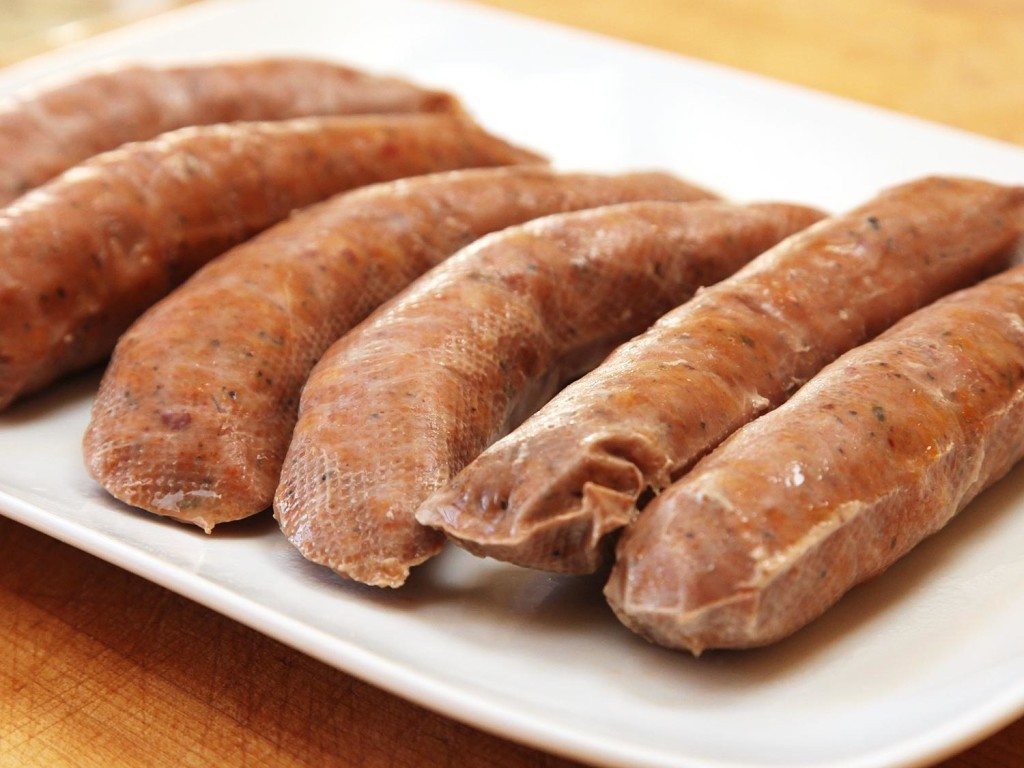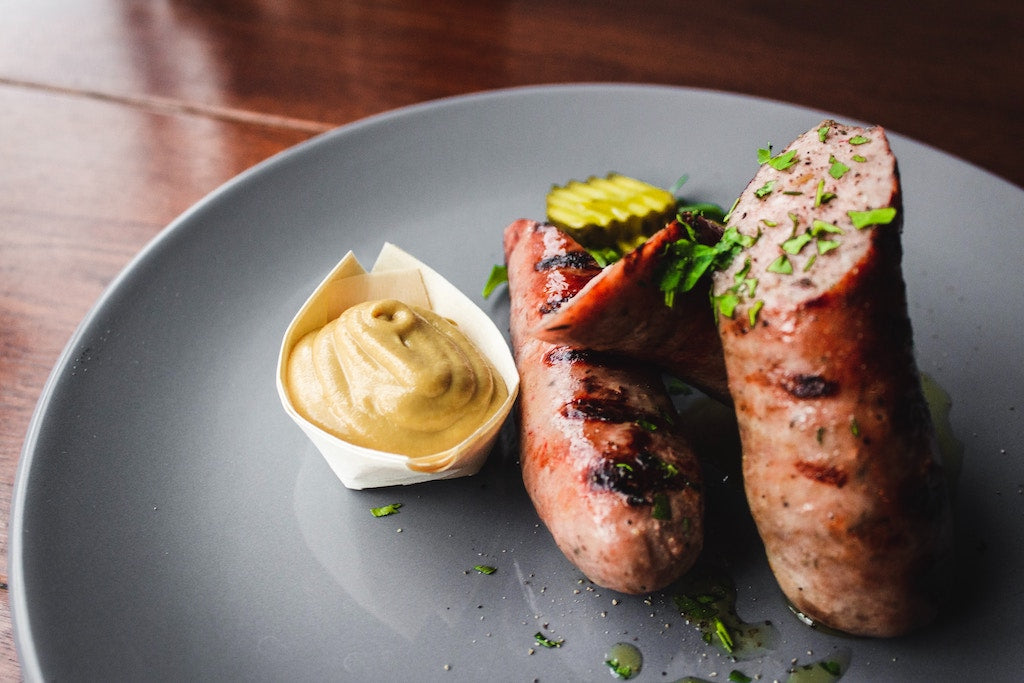A few years ago, I took to the grill to find what is, in my opinion, the best way to grill sausages. My favorite recipe during the grilling months is the Simmered n' Grilled Sausage. What about the off-season? Or, what if you don't have a grill? I had to find a solution. With 30 pounds of sausages in hand and a few packs of extra-hoppy IPA seasonals and lagers, I fired up the Precision® Cooker for a second round of sous vide sausage testing. I spent some serious time seasoning, soaking, sealing, poking, bagging, and pretty much manhandling the flavorful tubes of pork-packed goodness until I arrived at what I believe is the best method to take them from raw to cooked using sous vide. Here's the deal.
Find the Right Sous Vide Sausage Temp
I cooked sausages using a Precision ® Cooker to hold a water bath at temperatures ranging between 130°F up to 185°F. The sweet spot is right in the middle.
Cooked Sausage vs Uncooked
From sous vide Italian sausage to sous vide bratwurst, it takes a little experimenting to land the ideal final temperature. So, how to tell if sausage is cooked?
At 140°F (60°C), you get a sausage that is extra juicy compared to traditional cooking, but with a softness that some might find bordering on too soft. At 150°F (66°C), your sausage is fully firm and extra juicy with a very smooth texture throughout. At 160°F (71°C), your sausage has a nearly traditional texture—springy and juicy, quite firm, but starting to show a difference in texture between fat and lean areas with the latter starting to turn a little loose and crumbly.

Just like with chicken and steak, a sausage cooked sous vide can be held for a long time, but not indefinitely. As you begin to hold the meat for longer than around 4 hours or so, it’ll start to take on a mushy, mealy texture. I recommend maintaining sous vide sausage temperature between 45 minutes and 4 hours.
Seal off the bag.
One problem I immediately ran into with sous vide sausages was their shape. Sausages are extremely soft when raw. Packing them into vacuum bags and using a sealer ends up giving them an unnatural pinched appearance. You have two options to combat this: manually hitting the “seal” button on the vacuum sealer before it’s had an opportunity to start compressing, or by using the water displacement method in lieu of a countertop vacuum sealer. Just place your sous vide sausage inside a heavy duty zipper-lock bag, seal the bag almost all the way up, then gently lower it into a large pot of water, sealing off the bag just before the top is fully submerged.

Sausages and beers.
The idea of simmering a sausage in beer is appealing, but how well does it really work? I tried adding various beers to the sealed bags as I tested bratwurst sous vide temp (I used a hop-heavy IPA, a light lager, and a fresh and fruity saison to cover all my bases), expecting the sausages to come out with extra flavor. Much to my surprise, I found the exact opposite to be the case: the sausages actually lost flavor as they cooked in beer. The problem is that even though beer has a few flavorful compounds, it's mostly water, which means that it ends up drawing salt and other compounds out of the sausages as they cook. Try and cook a sausage and beer and instead of adding beer flavor to the sausage, you really wind up adding sausage flavor to the beer.

The solution? Heavily season the beer with salt as you add it to the bag. Adding salt to the beer helps to balance out the osmotic pressure on the sausages’ cell walls, keeping what's inside them inside while also adding a small amount of beer flavor to the outer layers.
Getting the perfect finish on sausage sous vide.
As with other meats, cooking sous vide Italian sausage doesn’t produce any color or texture on the exterior. For that, you need to finish them off on the grill or in a skillet. This is very simple:
- Take the sausages out of their bags, dry them thoroughly with paper towels (surface moisture is the number one enemy of good browning)
- Cook them with a little butter over moderate heat in a skillet or over a grill.





5 comments
Beyond Hot Italian Sausage using Sous vide at 130* for 1 hour. Then, onto a hot grill until 165*. Grill some peppers and onions, put everything on some hot dog buns
with a little musard and it’s suppertime. (had to go vegan last year due to health)
The trick to cooking sausages in beer or crisp white wine and butter is the reduction of that liquid into a thick slurry. Not exactly possible in a sous vide
Cumberland sausage done at 66c for 1hr, browned in an air fryer. Made the perfect sausage, served in a hotdog bun with some onion, mustard, and a little hot sauce.
I have not heard of cooking sausage in any liquid other than water or beer. However, I don’t recommend cooking sausages in beer, for the same reason mentioned in this article. The beer will act as a solvent, leeching the flavor out of the sausage.
Good luck!
Hi, using the beer techniques is good but just asking what other option i can use beside beer, can i use Soda.